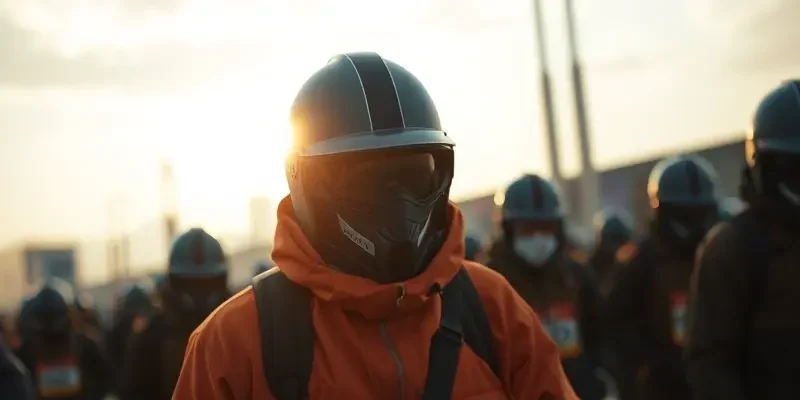The Power of Visualization in Injury Recovery: Your Guide to Healing, Motivation, and Prevention
Injuries are part of every fitness journey—whether you’re a weekend jogger, a competitive athlete, or just starting with regular workouts. But did you know that your mind can actively support your body’s healing? “Visualization” isn’t just a mental trick for pre-competition nerves—it’s a powerful, science-backed tool to speed up recovery and prevent future injuries. Let’s explore how you can use visualization every day to stay motivated, heal effectively, and come back stronger.
What Is Visualization and Why Does It Matter?
Visualization is the process of mentally rehearsing actions, healing, or success. Imagine top athletes picturing perfect swings, or an injured runner visualizing their muscles repairing. This isn’t wishful thinking—research shows that visualization activates the same neural pathways as real movement, helping your body prepare and heal even while resting.
Visualization benefits everyone:
- Newbies stay connected with their goals.
- Experienced athletes retain skills during downtime.
- Anyone recovering from injury finds extra motivation and confidence.
Visualizing Healing: See Your Body Repair
How It Works
Spend 5–10 minutes daily focusing on your injured area. Close your eyes and picture the healing process:
- Imagine swelling going down, tissues knitting together, and pain fading.
- Picture healthy cells repairing damaged muscles or ligaments.
This mental exercise can calm your stress response and promote a positive mindset—both key factors in physical healing.
Real-World Example
A basketball player with a sprained ankle uses healing visualization while icing. They imagine fresh blood carrying nutrients to the injury, helping speed recovery. For enhanced recovery methods, consider complementing visualization with techniques like massage gun therapy.
Mental Rehearsal: Keep Your Skills Sharp

Why It’s Crucial
Injury downtime often means lost practice. But your brain can still work out! Mentally rehearsing movements:
- Preserves muscle memory.
- Reinforces correct technique.
- Reduces the time needed to “re-learn” skills post-injury.
Try This
If you’re a cyclist with a knee injury, mentally run through your pedal stroke or shifting gears. Be detailed: How do your feet feel? What’s your cadence? The more sensory detail, the better.
Build Confidence and Bust Fear
Overcoming Setbacks
Fear of reinjury is common. Visualization helps by allowing you to “see” yourself moving pain-free and performing well, which:
- Increases confidence.
- Lowers anxiety.
- Creates positive associations with returning to sport.
Motivation Booster
Recall moments of past success—like finishing a 5K or nailing a tough lift—and visualize achieving new milestones after recovery. This keeps you motivated even during setbacks.
Prevention: Visualize for Safer Movement
Injury-Proof Your Technique
Visualization isn’t just about bouncing back—it’s about staying healthy. By mentally practicing proper form:
- You teach your body safe, efficient movement patterns.
- Visualization reinforces cues from your coach or physical therapist.
Pro Tip
Before workouts, take a moment to mentally rehearse lifts, jumps, or sprints with perfect form. Your brain “practices” even before your body does. Pair this with physical tools like the foam roller benefits for injury prevention and improved mobility.
Managing Stress and Staying Focused
Calm and Ready
Visualization isn’t just about the body—it’s about mindset. Use it to:
- Imagine yourself staying cool under pressure.
- Prepare for setbacks, mistakes, or competitive nerves.
- Reduce stress hormones, promoting overall healing.
Daily Routine Example
Each morning, take 5 minutes to visualize yourself handling challenges calmly—whether it’s a tough rehab session or a high-stakes game.
Getting Started: Step-by-Step Guide
- Set aside quiet time—5–10 minutes is enough.
- Focus on your breath to relax.
- Choose your goal: healing, skill rehearsal, confidence, or stress management.
- Engage all your senses: see, hear, feel, even smell your environment in your mind.
- Repeat daily for best results.
Key Takeaways
- Visualization is a proven tool for injury recovery, confidence, skill retention, and prevention.
- Combining mental and physical rehab maximizes healing.
- Both beginners and seasoned athletes benefit.
- Pair visualization with advice from your doctor or coach for best outcomes.
Ready to Try Visualization?
Start small: tonight, before bed, picture one positive step in your recovery. If you have questions or want more strategies, join the GymPulse Club community—we’re here to support your journey to strength, resilience, and new personal bests!
